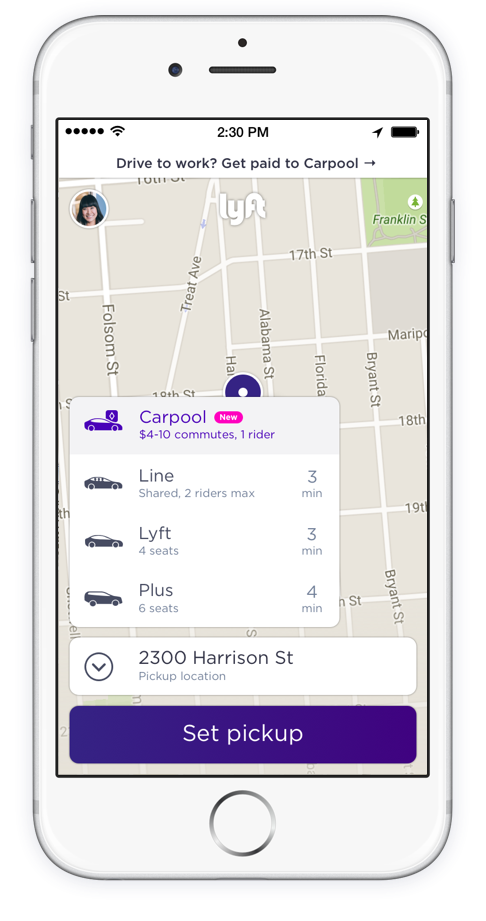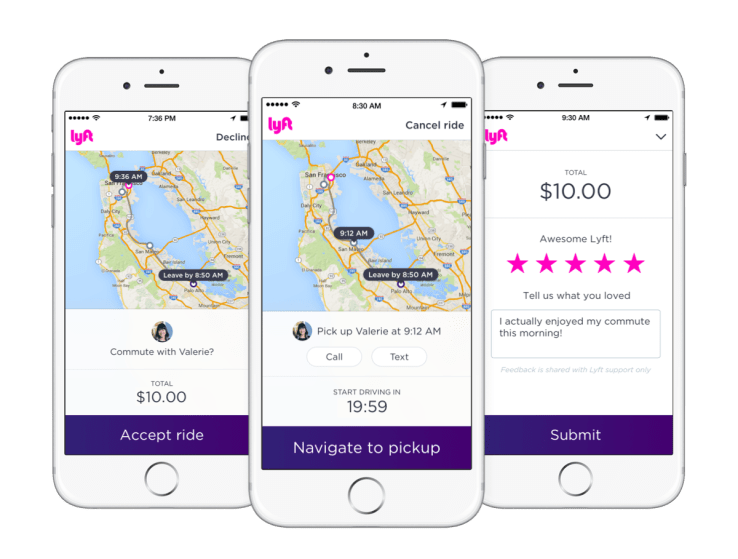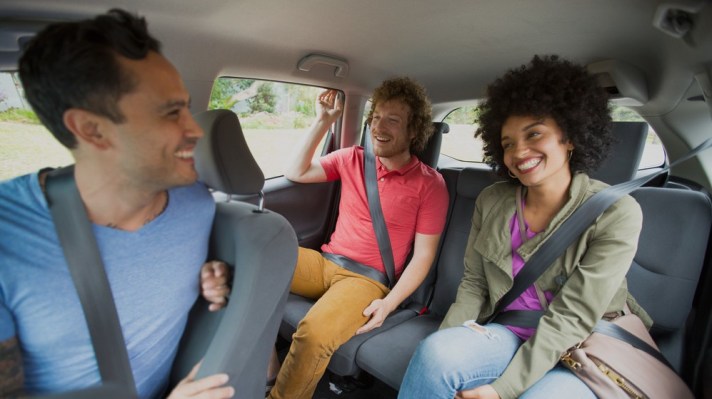Back in 2007 co-founders John Zimmer and Logan Green envisioned a new kind of mass transportation carpooling system connecting riders and drivers across the nation. They called it Zimride.
But it turned out a lot more people wanted to get around the city than wanted to go the distance and the parent company was supplanted with something pinker and fuzzier a few years later.
Lyft now wants you to take a ride back to its Zimride roots with Lyft Carpool.
Doesn’t Lyft already have a carpooling service called Lyft Line? It does! Sort of.
Line will take you and a bunch of strangers across town for a few bucks, like a carpool, but the ride would be much more expensive if you wanted to go from the Marina to Mountain View, for example.
 Rival service Uber doesn’t care if you want to go to Smitten Ice Cream on Octavia or Rick’s in Palo Alto using its version of Line, UberPOOL. The cost may be exorbitant to get you down the 101, but it will take you there ($38.80 from TechCrunch HQ, in case you were curious).
Rival service Uber doesn’t care if you want to go to Smitten Ice Cream on Octavia or Rick’s in Palo Alto using its version of Line, UberPOOL. The cost may be exorbitant to get you down the 101, but it will take you there ($38.80 from TechCrunch HQ, in case you were curious).
But price seems to be a big factor for riders in choosing between rideshare services. Lyft Line hasn’t gone beyond city limits for that reason, Lyft tells TechCrunch.
So just how far is Carpool willing to take us right now? You may have noticed all these location references have been within the Bay Area. That’s because this is where Lyft’s new offering will serve for the time being.
Lyft teamed up with the California Metropolitan Transportation Commission (MTC) and its 511 Rideshare program, with whom Lyft recently announced a partnership, to pair riders up with drivers headed the same way on their daily commute.
The ride cost will be about $4 to $10 each way, depending on the distance – about the same as a trip down to Mountain View from the city if you first take MUNI and then hop on Caltrain. But Carpool could potentially save about an hour of time, depending on traffic conditions.
The rideshare company announced Carpool in December and has since gathered data from potential carpoolers before going live today to determine the busiest commutes.
Those who’ve driven anywhere in Silicon Valley will probably not be shocked to find the 101 haul from San Francisco down the peninsula is the number one requested commute. Lyft says that knowledge and some other data about when and where commuters need rides most will help create match efficiency within the app.
The service has the potential to also cut down on CO2. Emissions are a problem far beyond the Bay and an economical route relieving a portion of your carbon footprint may be enticing to at least a few green-friendly Lyft riders.

But carpooling isn’t a new concept – it’s been around since the 1970’s – and there are plenty of other carpooling apps in Silicon Valley. I listed at least 10 alternatives to Uber and Lyft awhile ago. It doesn’t seem like we need another one.
But Lyft has an advantage the others don’t, says Lyft’s director of transportation policy Emily Castor – brand recognition.
“We now have a very mature marketplace. Millions of people in the Bay Area have used our service. Millions of rides have happened through the platform and brand recognition as well as an install base of users who are familiar with our app,” Castor told TechCrunch. “We believe that will position us to be more successful.”
Carpooling isn’t for everyone – some people really like the idea of getting a personal driver to themselves. But Green’s and Zimmer’s goals have been pretty clear from the start of their journey – provide efficient rides, cheaply.
Uber may come up with something similar beyond POOL soon (the two seem to come up with very similar offers right around the time the other announces something). But, for now, Carpool provides Lyft with one more affordable form of transportation in the rideshare race.
